Why we created a diverse 50 species collection of ferns on one modern living wall and how we did it. I’ve always been drawn to ferns. If fairies and pixies exist, they will be found sitting on a mushroom under a fern in the woods. Ferns are otherworldly and ethereal. Transporting you to another time and place.
In 2014 I planted five different types of fern and had begun making plans to expand this collection further. Much further!
A living wall with a vast collection of fern species
Inspired by the Victorian ferneries at Biddulph Grange and Cragside (and later the Chelsea Physic Garden) we made plans for our own collection, employing modern techniques. Also because they remind me of happy times playing in the woods as a child at the back of our countryside cottage – a wall helps elevate ferns above head height again.
Why ferns?
Ferns bring a unique look to gardens, their leaves, called ‘fronds’, are often very delicate and finely cut. Despite this, they can thrive in the most difficult places where other plants can’t, like full shade. Which was perfect for the fence at the south end of our garden that casts full shade beneath it.
Ferns are tough, rarely getting diseases or major pest problems.
Importantly, for me, ferns give the feel of ‘the wild’ that no other plant can offer. Even sitting on a patio in the middle of London a fern can transport you to a woodland floor.
A diverse family of plants
Most people probably don’t realise how diverse ferns are. They come in all sizes from minute to full grown trees, and in a wide variety of shapes and even colours. Some are purple, some silver, others have leaves like holly, some look like fluffy little palm trees, and some, like our native Hart’s tongue fern, just look like pointy straps. A few fern species, believe it or not, also like growing in full sunlight.
Here’s a tiny selection to give you an idea of the variety of ferns:
Our living wall (aka the living fence)
Using fence posts and lots of my dad’s carpentry skills (and mum’s ideas!), this is what we created:
One of the brilliant things about living in a small urban space is that it forces you to make the most of the limitations. You have to get creative.
I’d realised that the side of our house was south facing getting full sun for most of the day in summer but this was also a very narrow alley. This created a thin 1.5m walkway that had a sunny side next to the house capable of supporting Dahlias, and a full shade side next to the fence.
Chris and I had seen many modern living walls around London. They look very cool and the fantastic thing about them is that they make the most of vertical space, something that is so important to use in a small garden. It means, for a plant collector like me, I could grow five to six times as many plants in one spot. Amazing!
It was a very cool prospect, being able to grow lots of shade loving plants right next to sun loving plants. To make this a reality we needed to invest in large pots for the Dahlias, and somehow build a freestanding, shelving unit for the fern living wall. After speaking to Monty, he planted the idea that we could just use pots. My mum, dad, Chris and I then literally spent months planning the thing.
We kinda winged it a bit, with our only plans being this rudimentary sketch:
But it worked. The main concept was to be able to house about 50 – 60 two litre black plastic pots. Two litres being the optimal size for many small to medium ferns suitable for a living wall. Black so they disappeared behind the ferns, plastic to better retain moisture and square so they didn’t roll around. The shelves are at 45 degrees.
What ferns are suitable?
I was recommended by Dr Dick Hayward early on to investigate Polypodiums, which can be epiphytic (can grow on other plants obtaining water and nutrients from the air). Therefore perfectly suited to the living wall conditions.
However, I wanted to expand the collection to learn much more about different ferns. So I set about researching. Reading many fern books and websites of fern specialists.
Then Nick Bailey, the head gardener at Chelsea Physic Garden stepped in, and advised us to look at the native Asplenium scolopendrium. Although one species, it has a huge variety of cultivars and is very well suited to wall life.
In the end, we decided that because the wall we’d built can hold 2 litre pots, it could support most small to medium ferns that didn’t grow much beyond 60cm tall. We started ordering young ferns online that fit the bill:
What ferns did and didn’t work?
The types of ferns we found to be winners for the fern wall (so far) are species of:
- Dryopteris (typical fern appearance and tough)
- Asplenium (Hart’s tongue ferns in many different cultivars – v. tough)
- Polypodium (largely epiphytic and tough)
- Adiantum (delicate and fluffy but small and easy to grow)
- Blechnum (some like acid conditions but perfect size for a living wall, very small)
- Cheilanthes (full sun loving, some are slightly tender and will need protection in the winter)
- Pteris (medium size with lots of narrow fronds, great for a living wall but again may need some winter protection)
- Cyrtomium (unusual holly like leaves, quite large but also quite tough)
- Polystichum (large and tough)
At the start I was adamant that I wanted a large number of Athyriums. Japanese native ferns that come in the widest variety of colours, from shades of purple, red and silver. I had visions of swathes of colour through the green ferns making an artistic statement.
This was not meant to be. Athyriums are acid loving plants, and although they can tolerate neutral growing conditions, they will not survive alkaline. Where we live in London, the soil is actually neutral to acid. However, being in pots the ferns had to be watered and sadly, our mains water is extremely alkaline.
Very quickly, all of the Athryriums (about 20 in total) declined and died. It was very depressing. If you have access to pure rain water, this would solve the problem. Unfortunately we don’t because our gutters are connected to the mains as well.
Also, ferns that love extremely damp conditions aren’t really suitable either. Being in pots on a wall exposed to warm conditions in summer as well as wind, inevitably there are times when the pots dry out, even for only a day. This can be enough to seriously harm the plants.
Finally, our other learning was that, in our case, the top shelf is exposed to direct sun. Eek – ferns need full shade. Thankfully, after some reading, I discovered Cheilanthes, that are sun loving ferns.
The ones that didn’t work at all for us were Athyriums (every single one died) because it needs acid conditions and Thelypteris because it needs very damp conditions and two plants died after one day of drying out.
The finished result
We are over the moon with our fernery. I love the fact that we found at least 50 species and other cultivars that grow happily in it. Which makes for an incredibly interesting addition to the garden.
It looks great from inside the house looking out onto it, especially in winter.
There are things we’ll change in 2016, primarily rearranging them to make it look more designed. When Monty Don saw it, we didn’t have time to arrange it properly so it looks a bit chaotic rather than a design feature.
But it does feel jungly, especially when standing next to it:
A fern fanatatic’s dream realised
As part of our flat renovations, I’d been dreaming for years (we rented the flat for 5 years before buying it) of adding doors where the bedroom window is at the end of the walkway. Allowing people to step down into a tropical walkway, completely surrounded by plants.
The full list of ferns
Below is the full list of ferns we researched, grew and are now still alive! Under the list are some close ups of some ferns. I won’t go into detail on all of them here, I’ll save that for further updates throughout the year.
- Adiantum aleuticum ‘Imbricatum’
- Adiantum pedatum ‘Imbricatum’
- Adiantum pedatum ‘Miss Sharples’
- Adiantum pedatum (aeluticum)
- Adiantum venustum
- Asplenium scolopendrium
- Asplenium scolopendrium ‘Angustatum’
- Asplenium scolopendrium ‘Crested Form’
- Asplenium scolopendrium ‘Crispum Moly’
- Asplenium scolopendrium ‘Fimbriata’
- Asplenium scolopendrium ‘Kaye’s Lacerated’ AGM
- Asplenium trichomanes
- Athyrium ‘Oceans Fury’
- Athyrium filix-femina ‘Frizelliae’
- Athyrium filix-femina ‘Victoriae’
- Blechnum spicant AGM
- Blechnum penna-marina
- Blechnum penna-marina BR68
- Cheilanthes lanosa
- Cheilanthes tomentosa
- Cyrtomium falcatum
- Cyrtomium fortunei AGM
- Cyrtomium macrophyllum
- Dryopteris affinis ‘Cristata Angustata’ AGM
- Dryopteris championii
- Dryopteris cycadina AGM
- Dryopteris dilatata ‘Crispa Whiteside’ AGM
- Dryopteris erythrosora AGM
- Dryopteris erythrosora var. prolifera
- Dryopteris filix-mas
- Dryopteris filix-mas ‘Linearis Polydactyla’
- Dryopteris lepidopoda
- Dryopteris sieboldii
- Dryopteris wallichiana AGM
- Gymnocarpium dryopteris
- Polypodium cambricum ‘Macrostachyon’
- Polypodium cambricum ‘Pulcherrimum Addison’
- Polypodium interjectum
- Polypodium scouleri
- Polypodium vulgare
- Polypodium vulgare ‘Bifidomultifidum’
- Polypodium cambricum ‘Whitley Giant’
- Polystichum braunii
- Polystichum munitum
- Polystichum polyblepharum
- Polystichum setiferum
- Polystichum setiferum ‘Herrenhausen’
- Pteris cretica ‘Wimsettii’
- Thelypteris palustris
- Thelypteris decursive-pinnata
Some close up photos
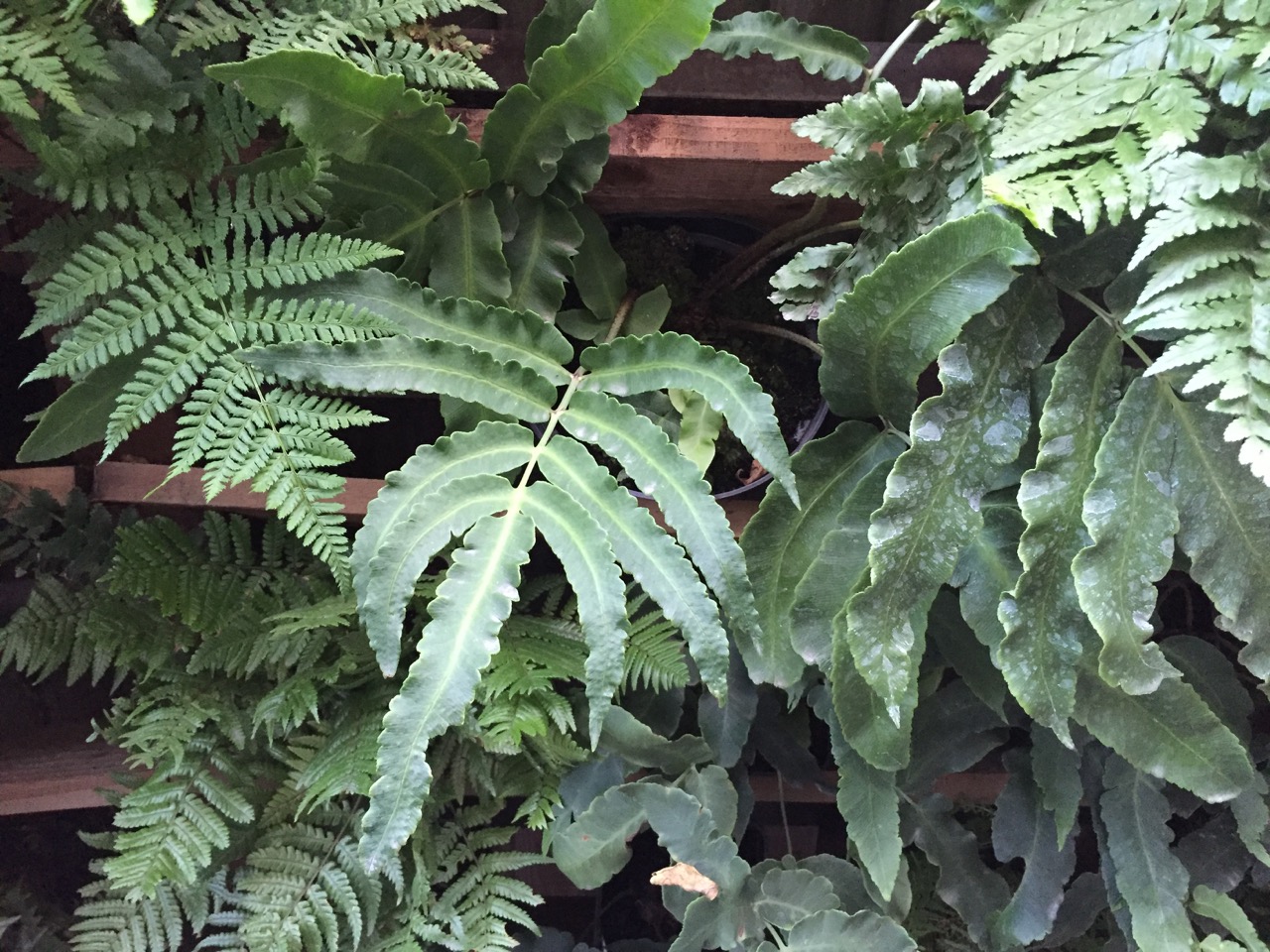

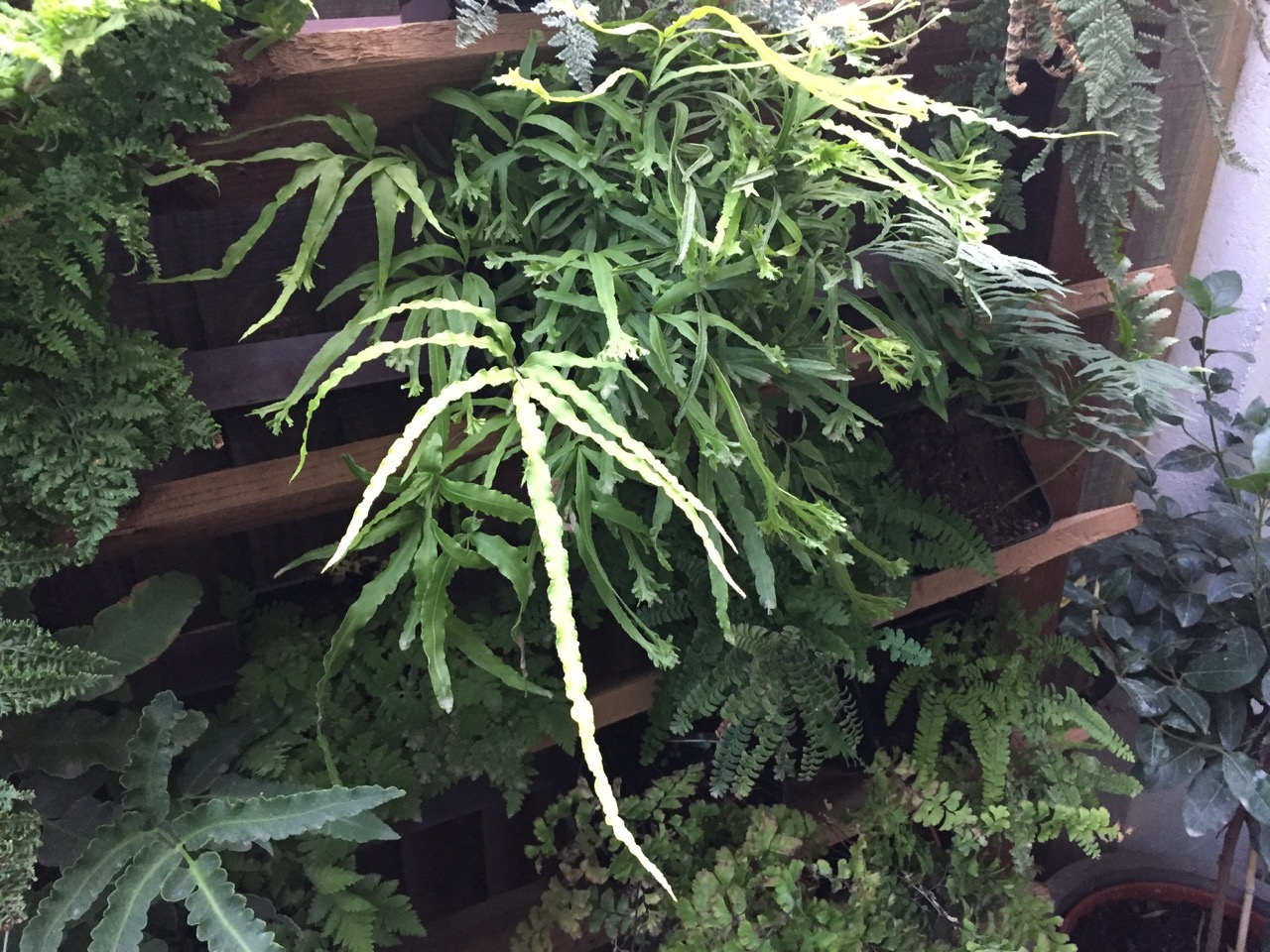
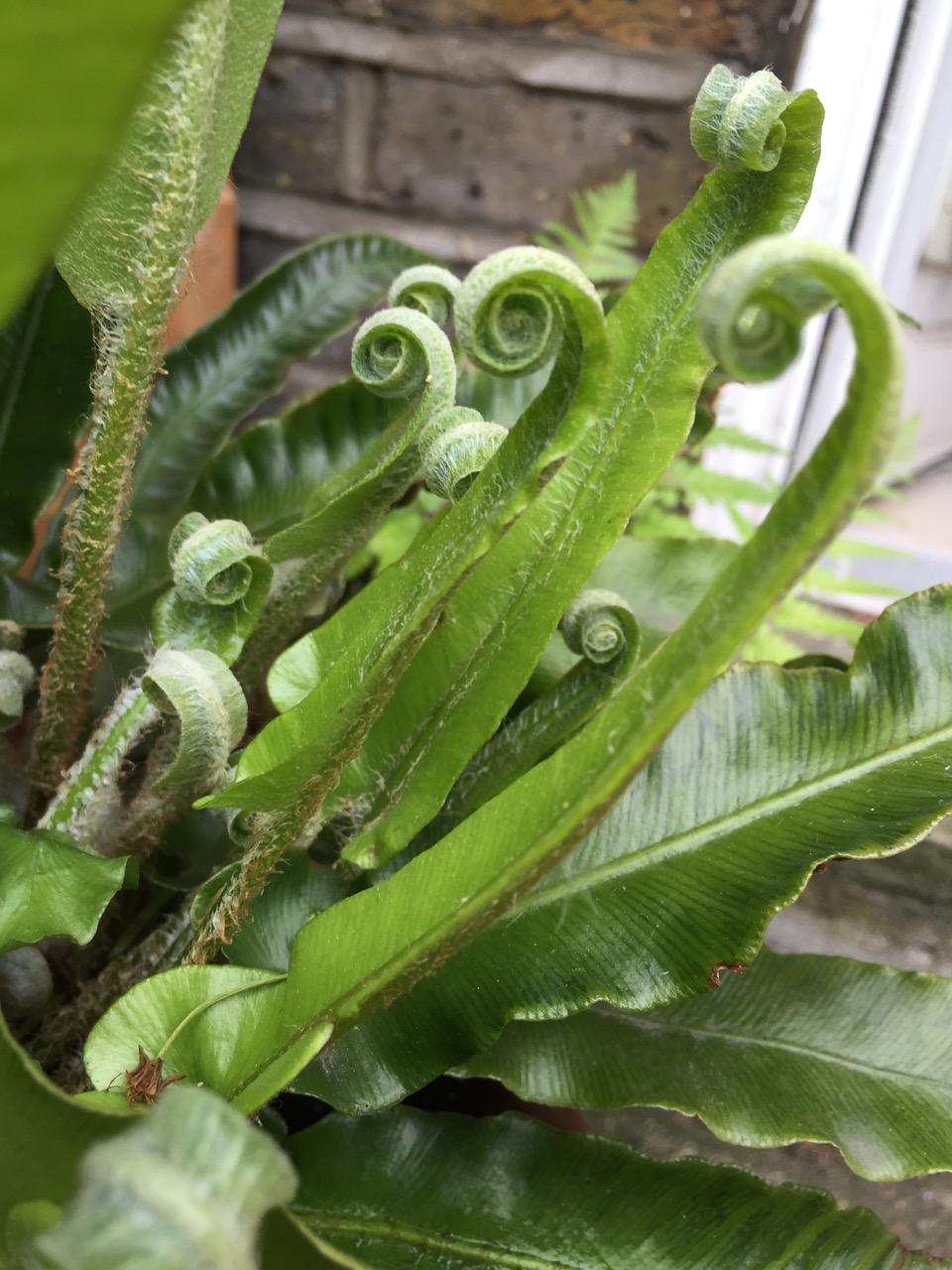
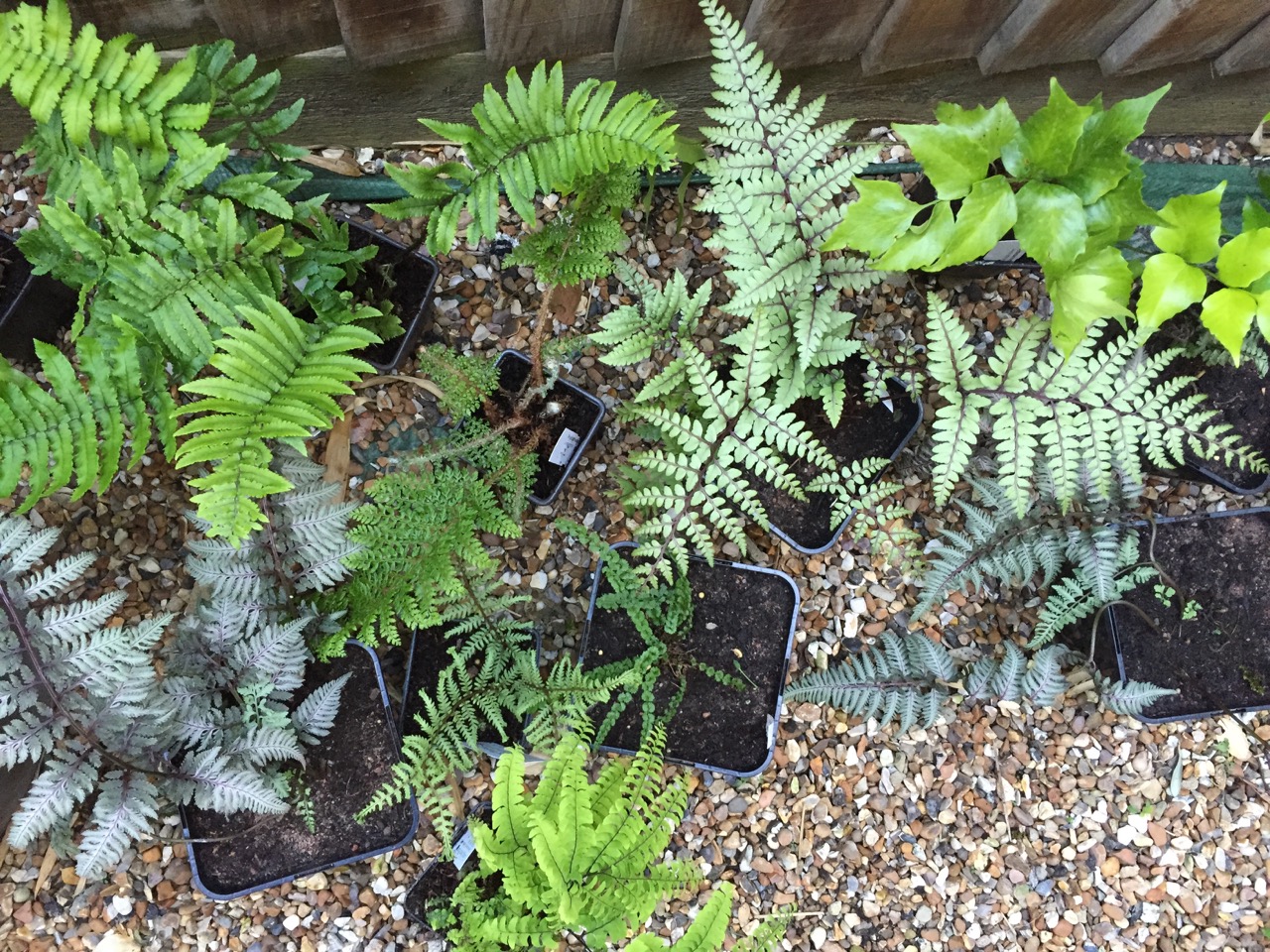
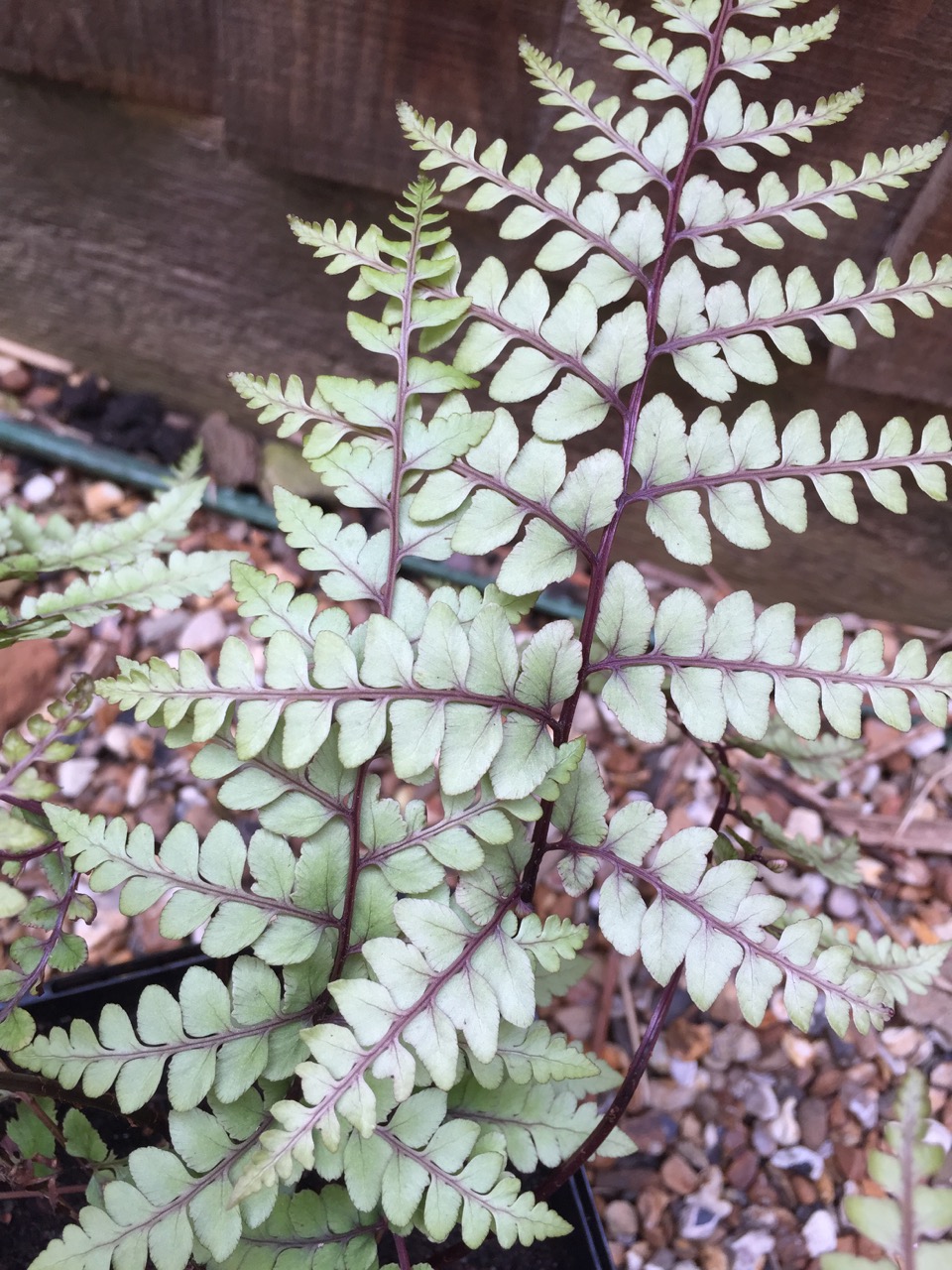
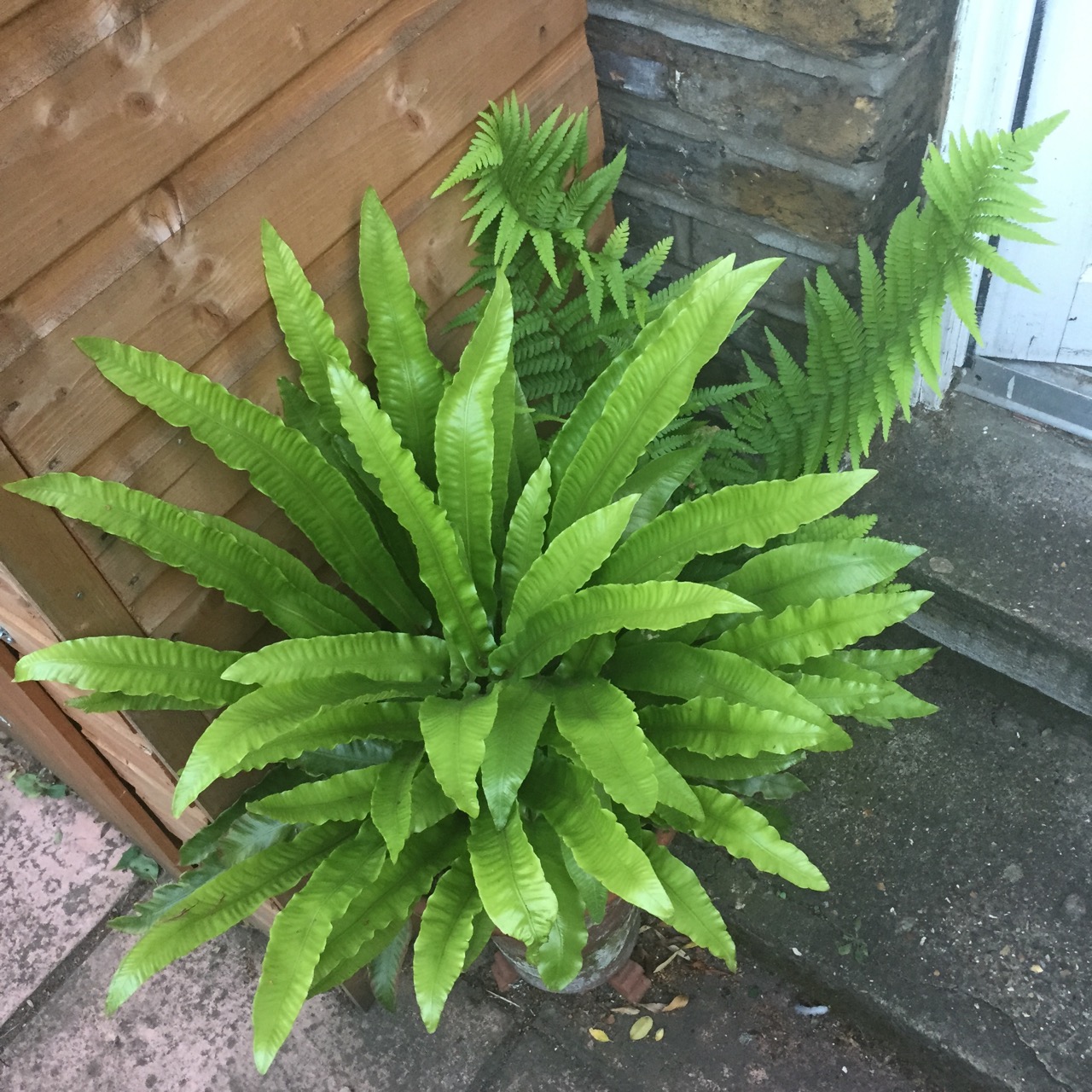
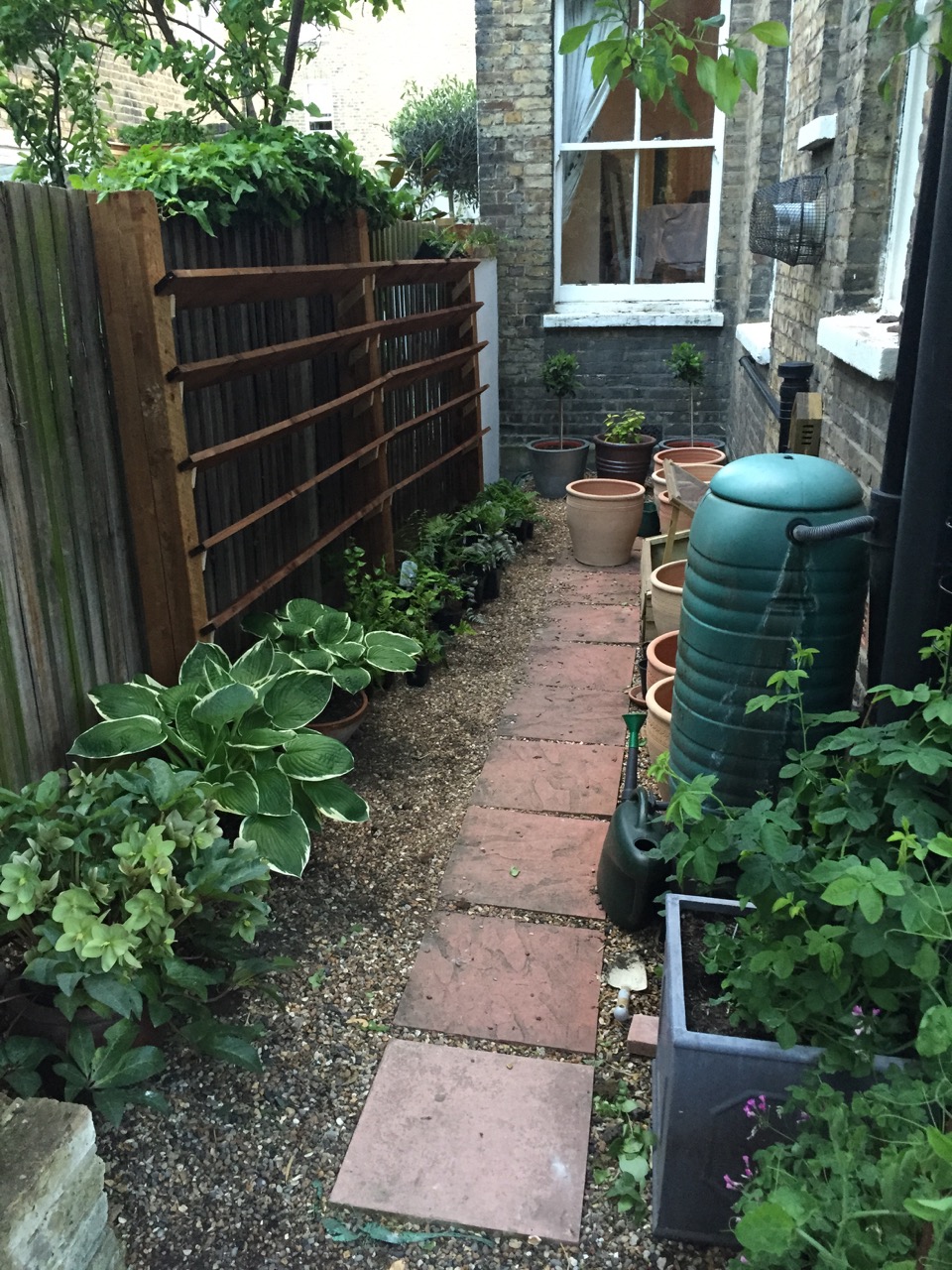
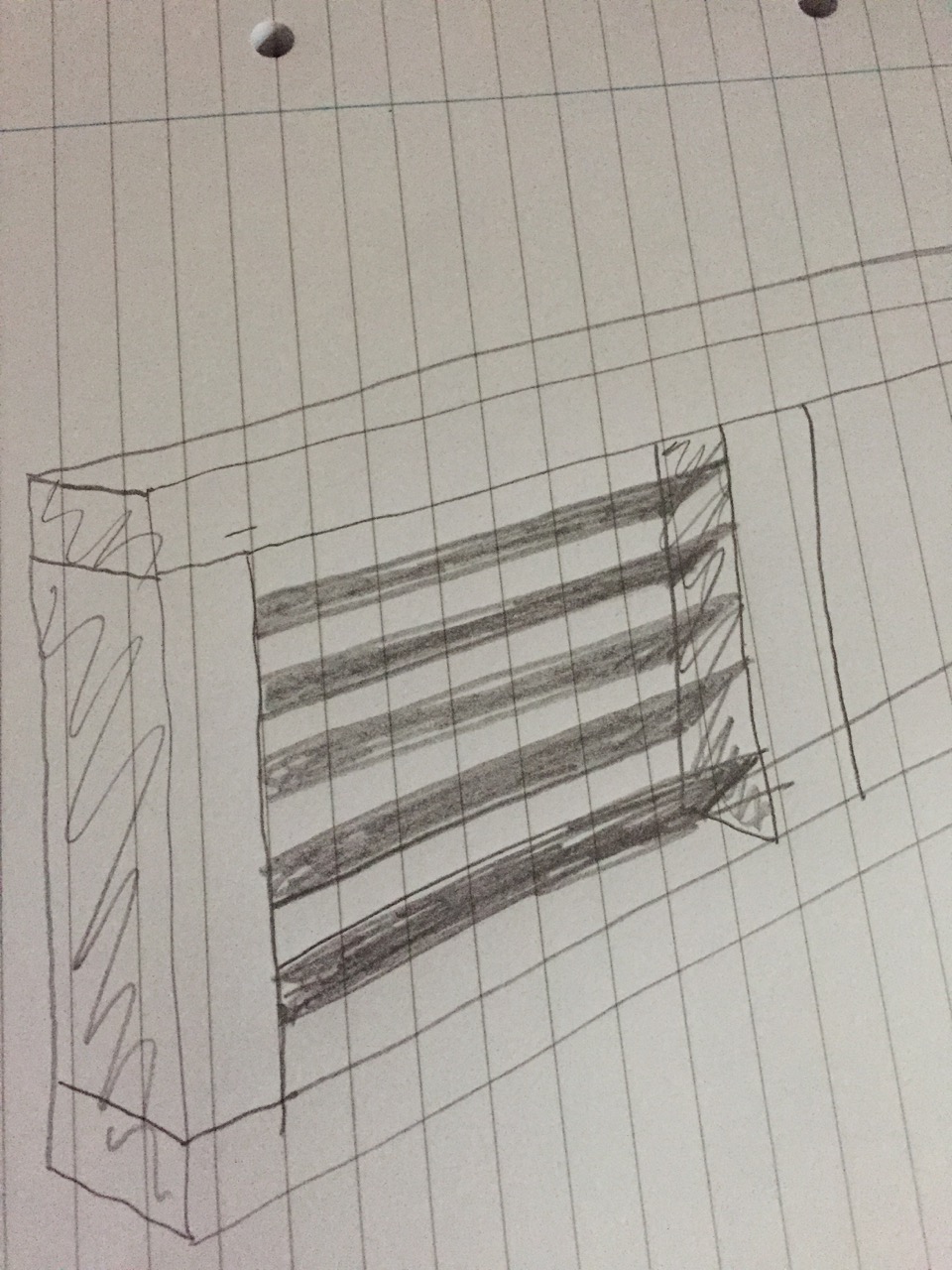
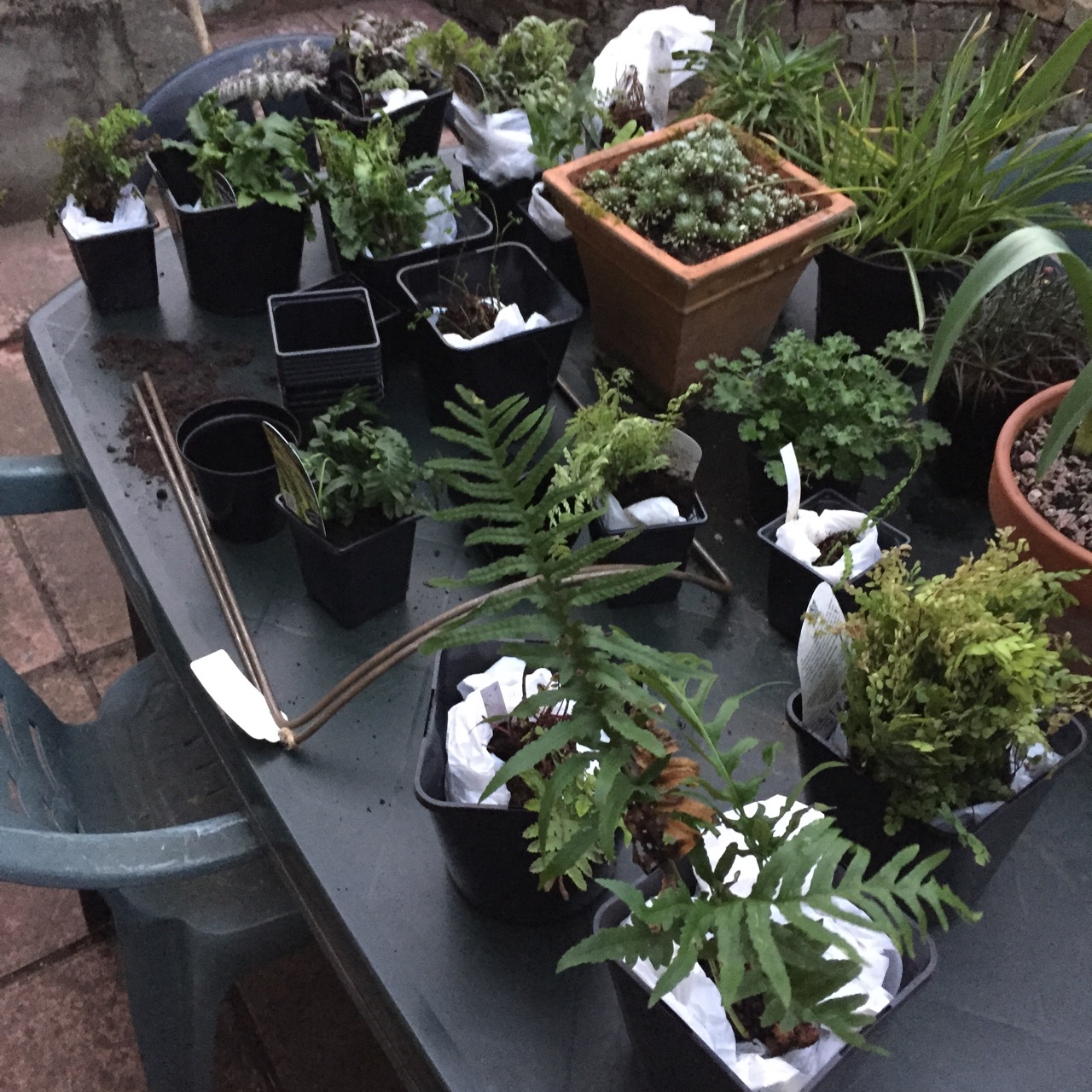
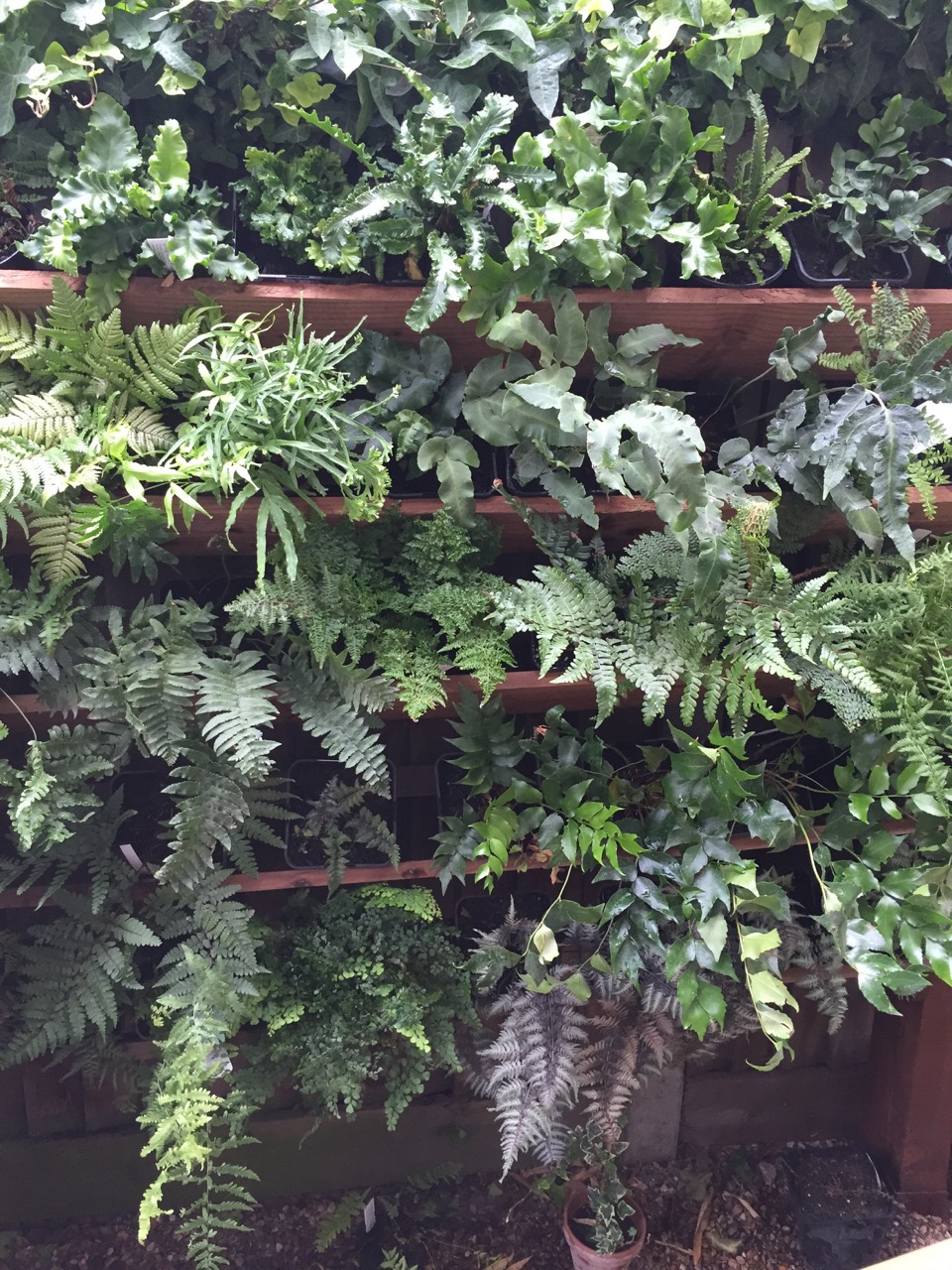
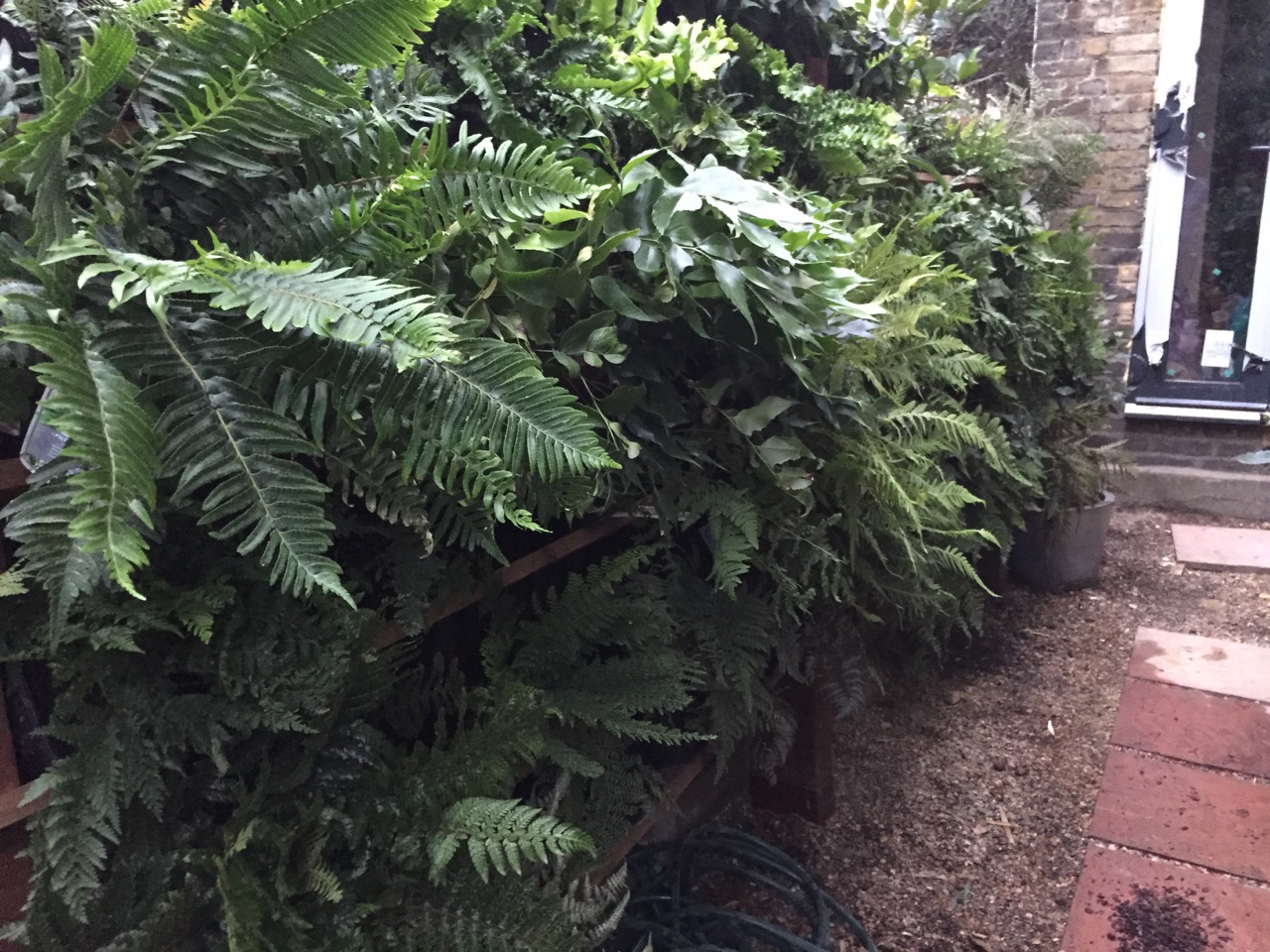
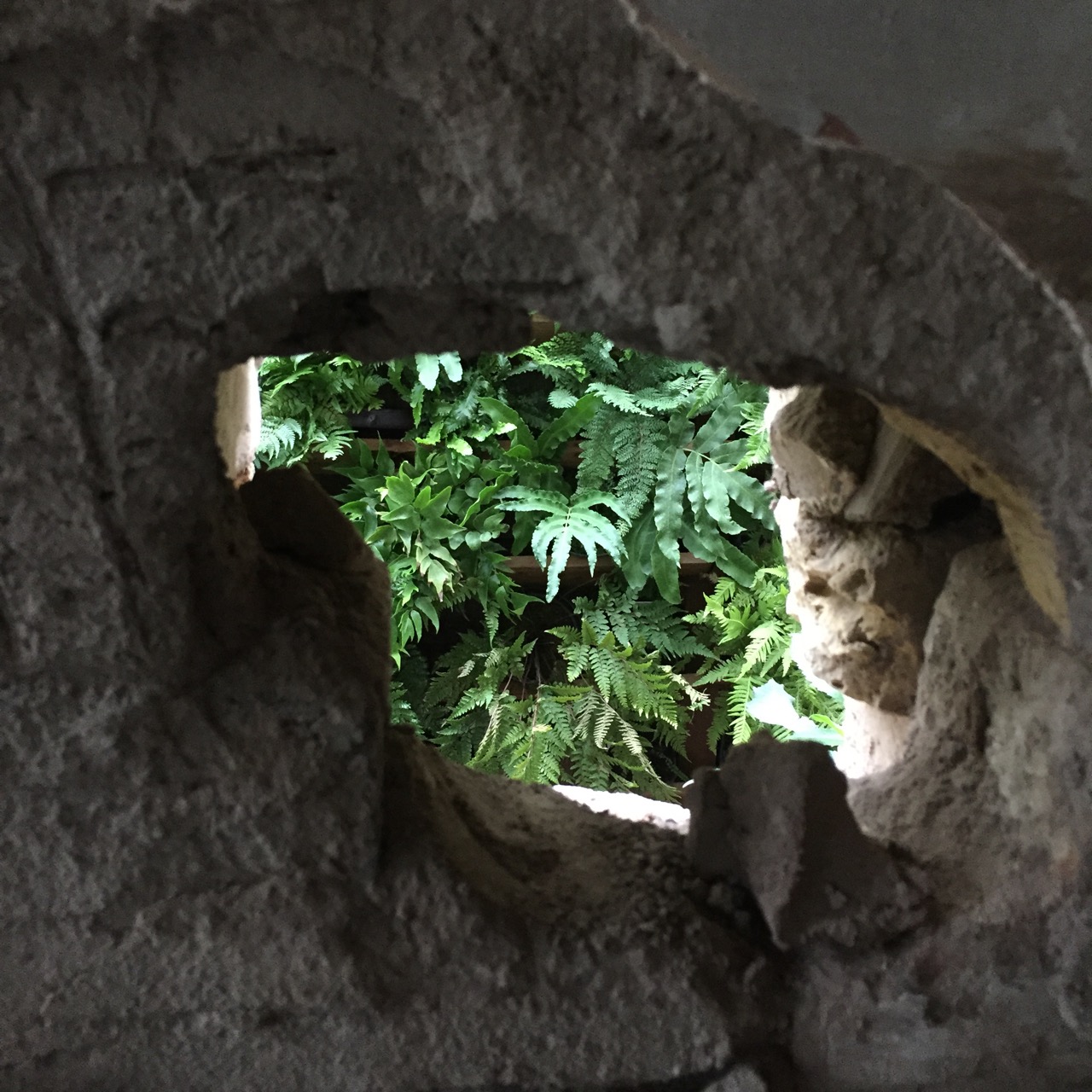
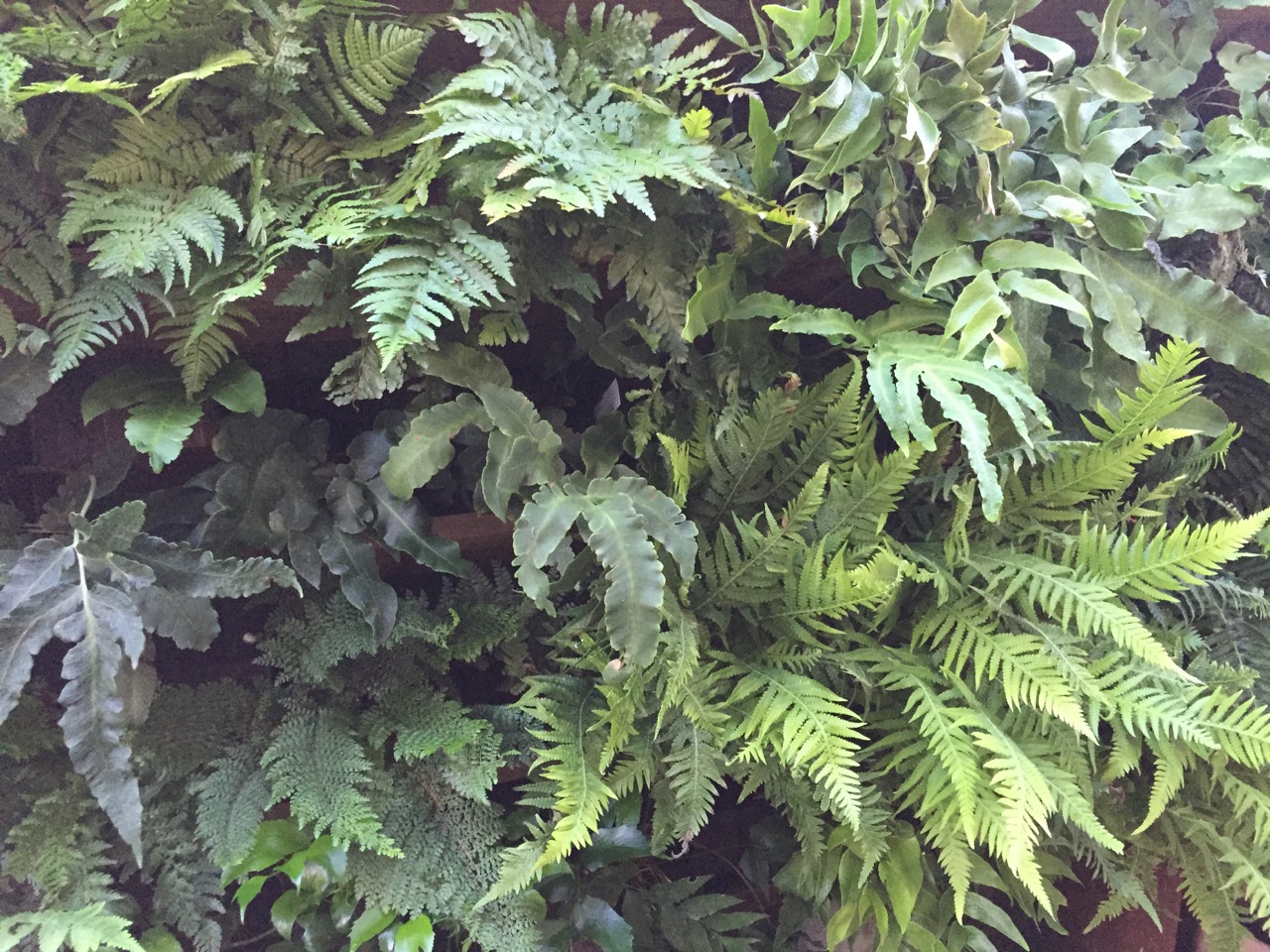
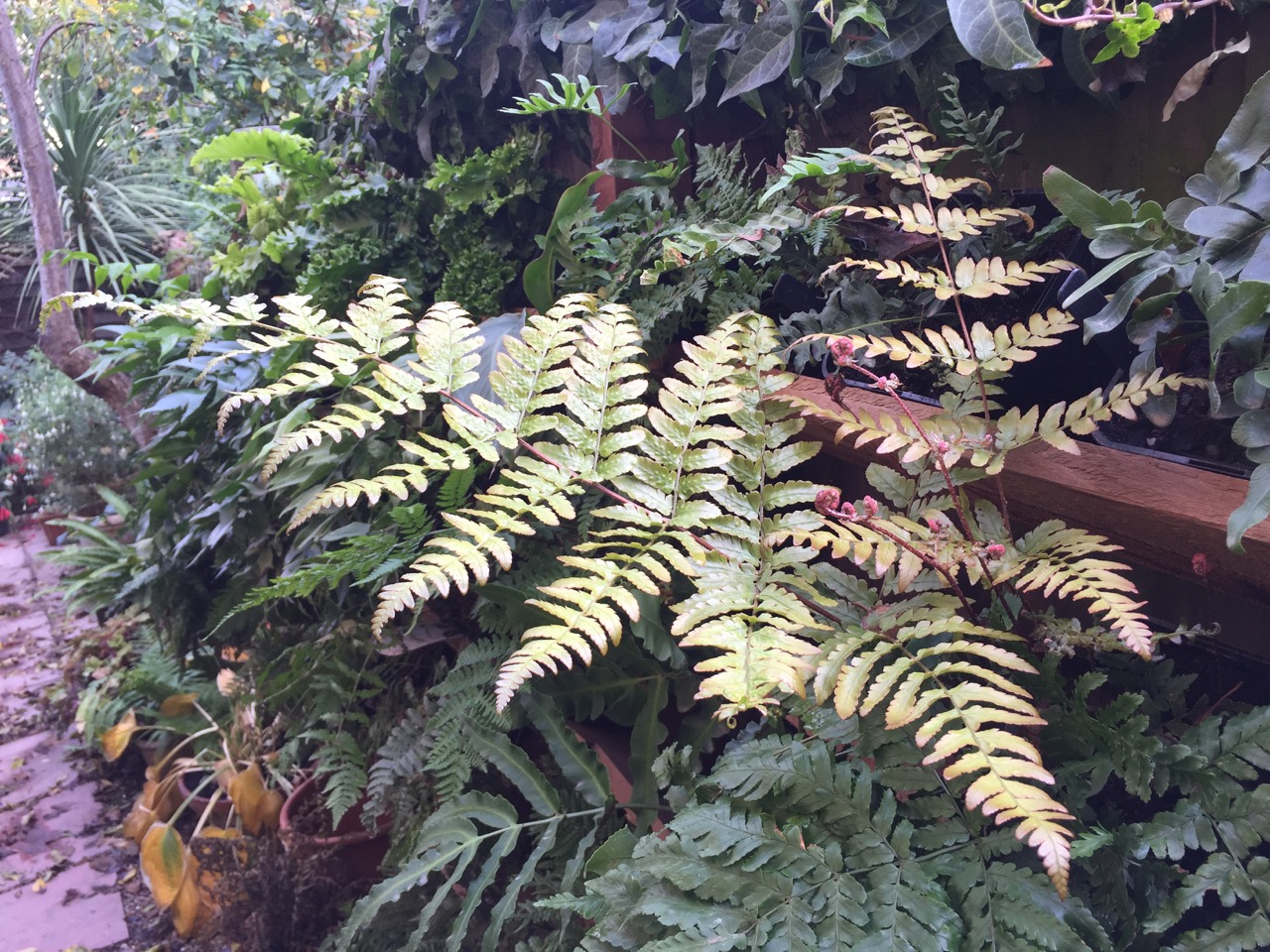
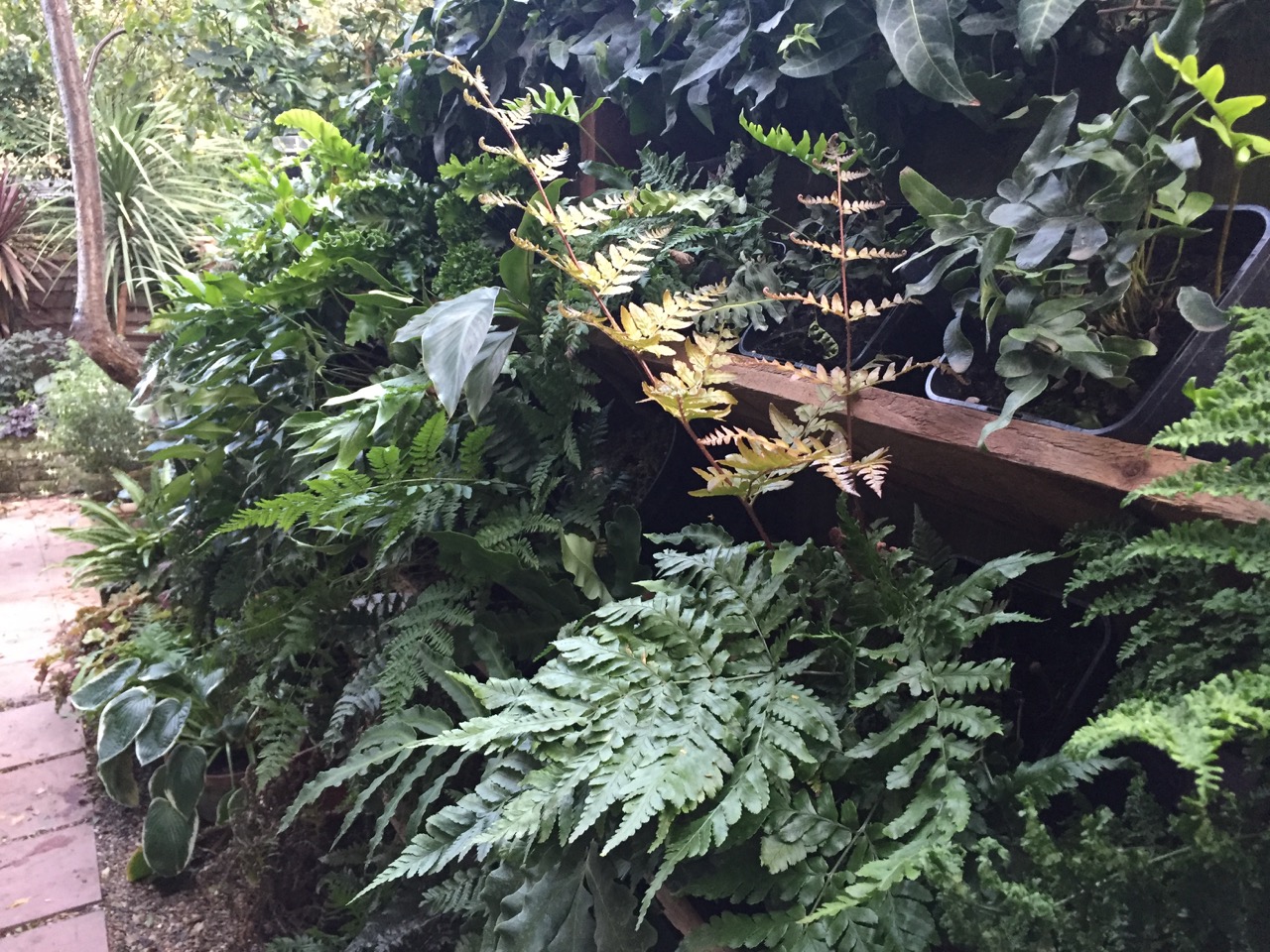
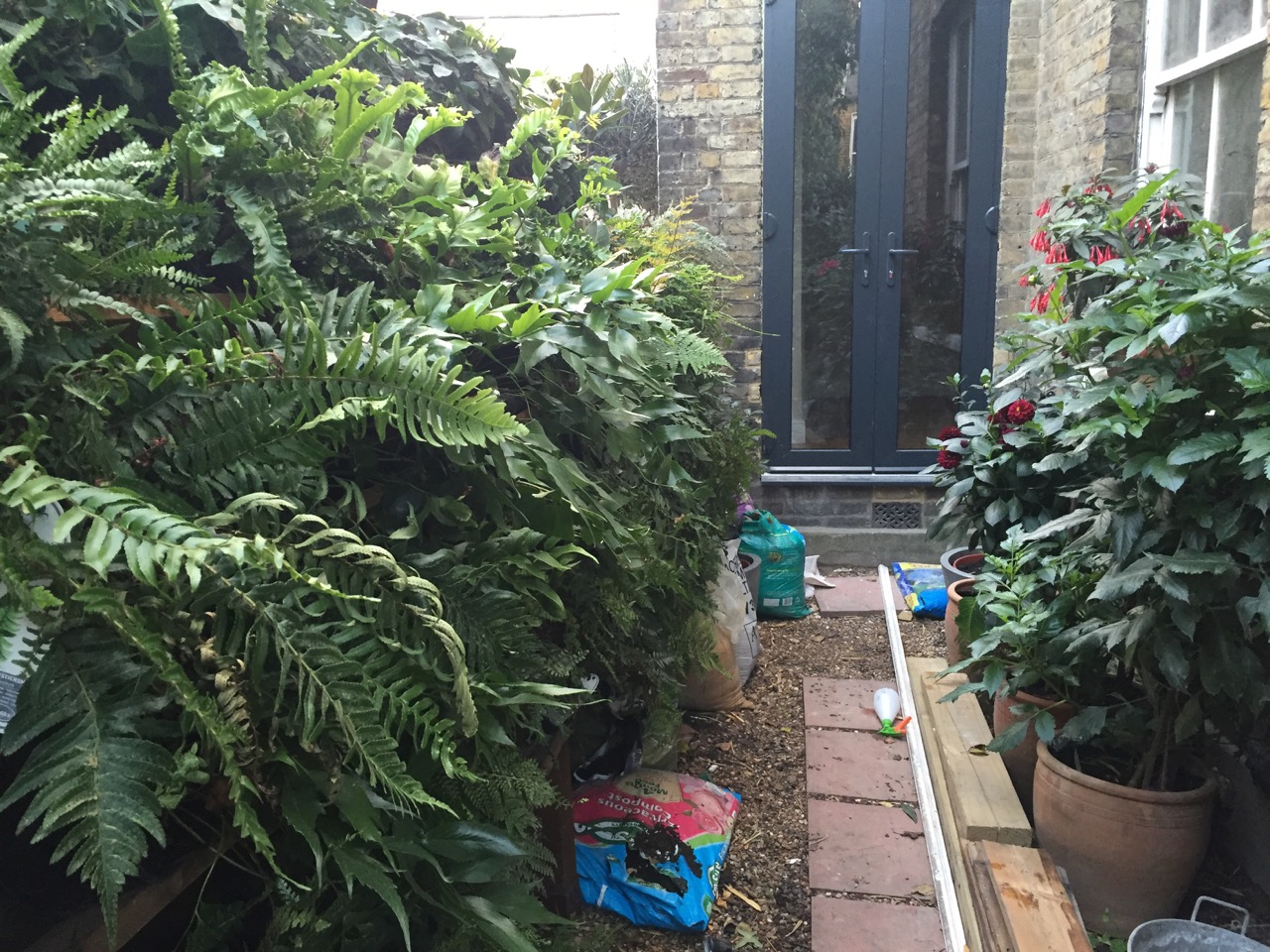
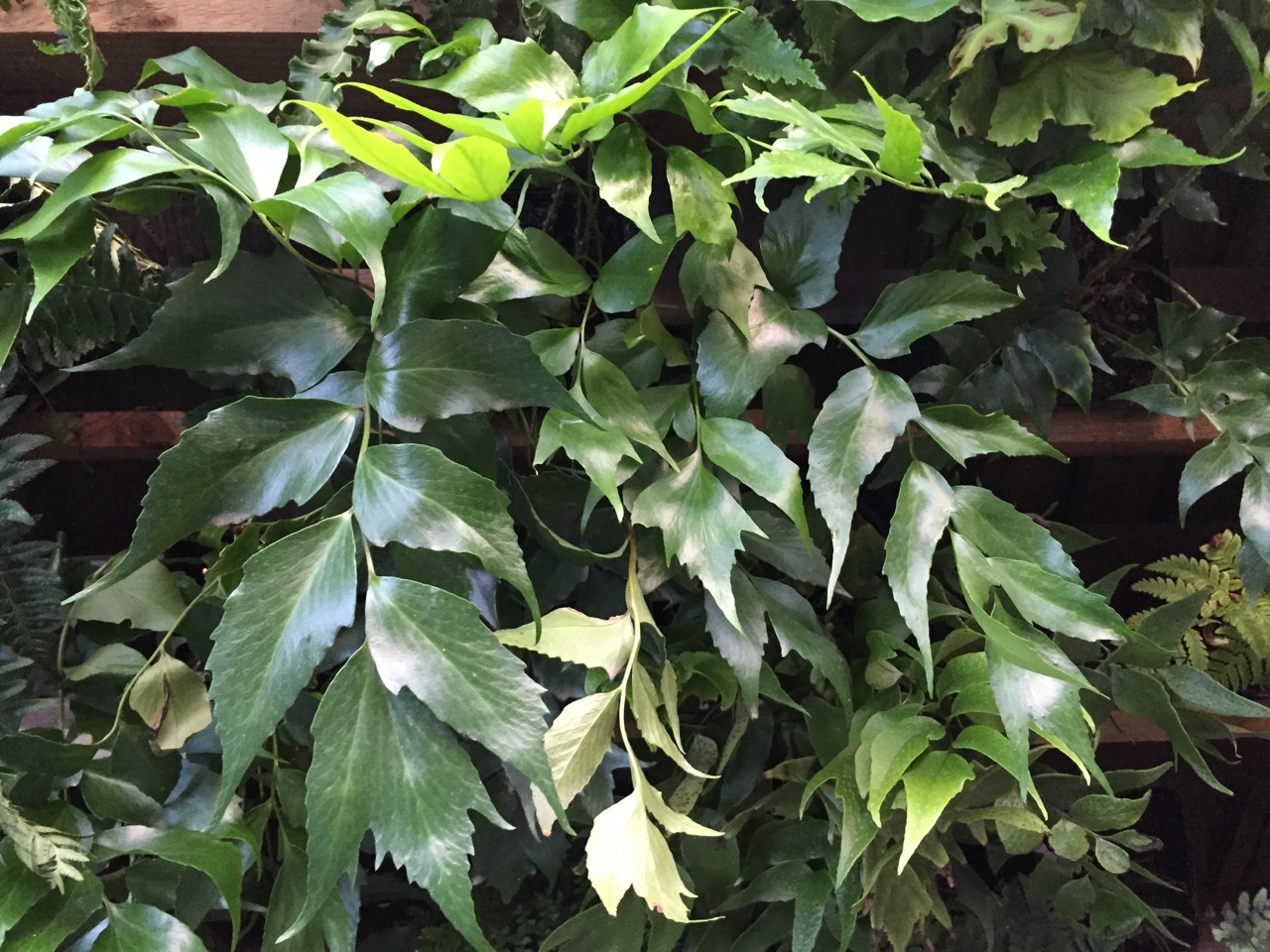
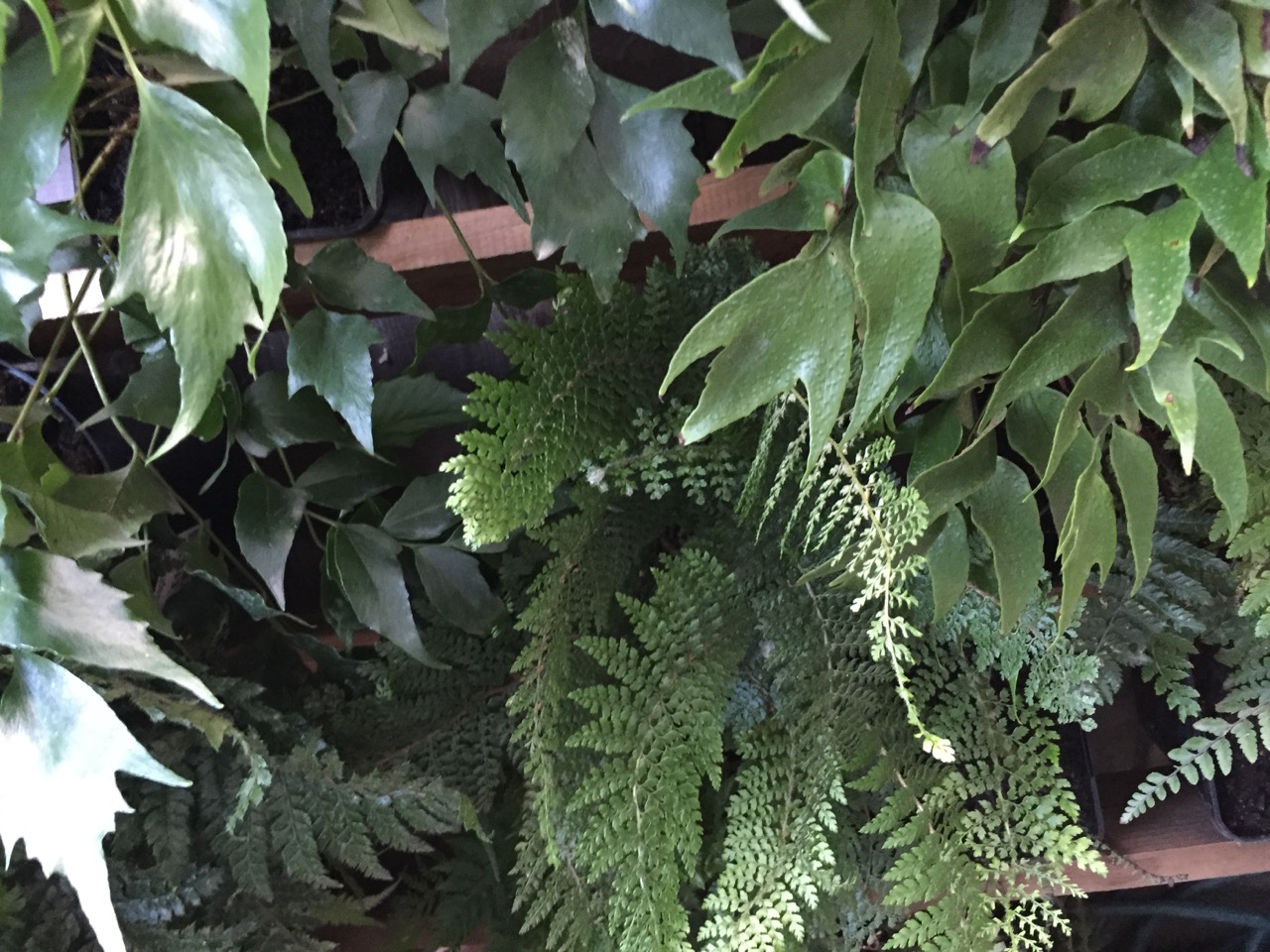
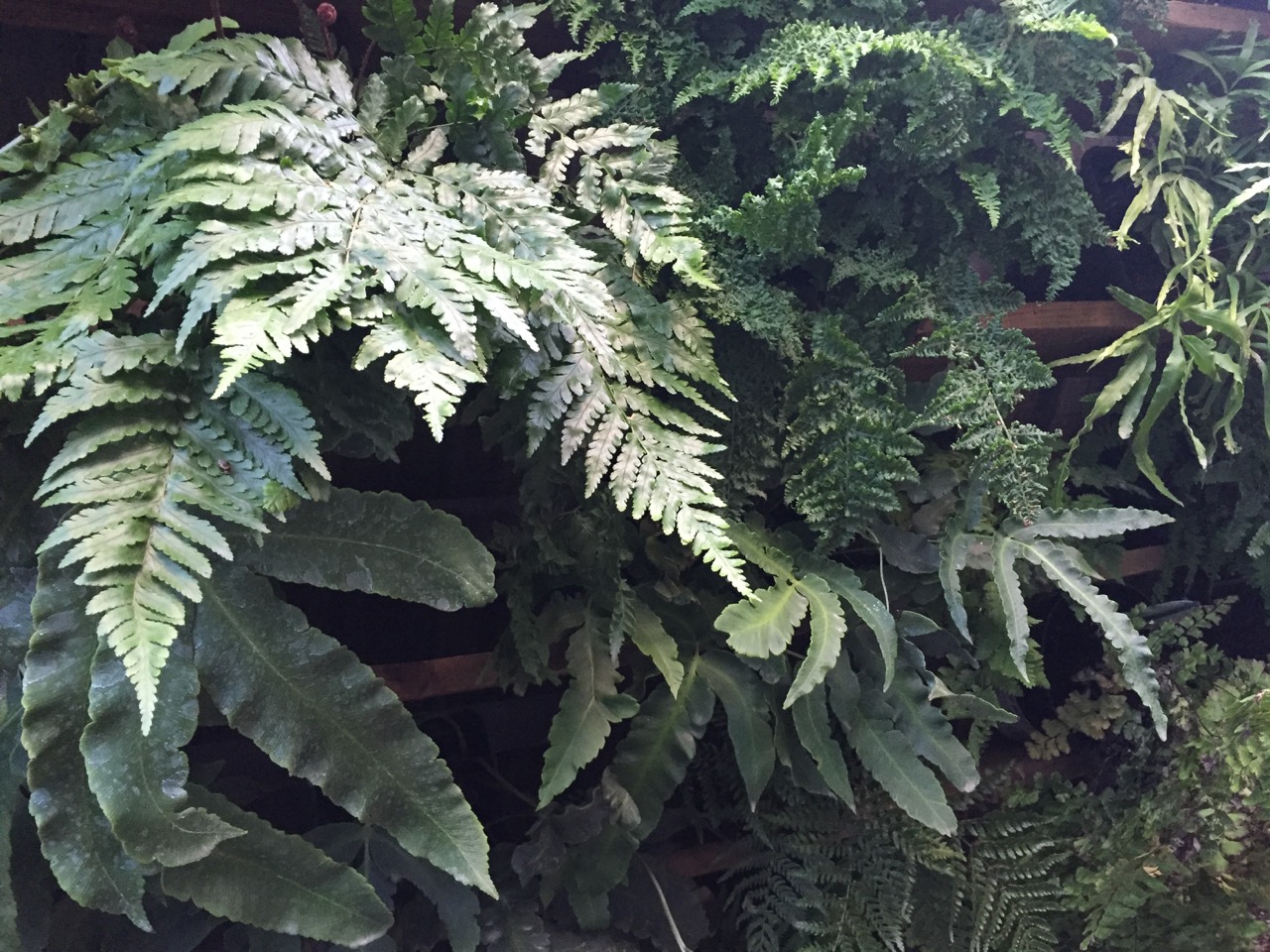
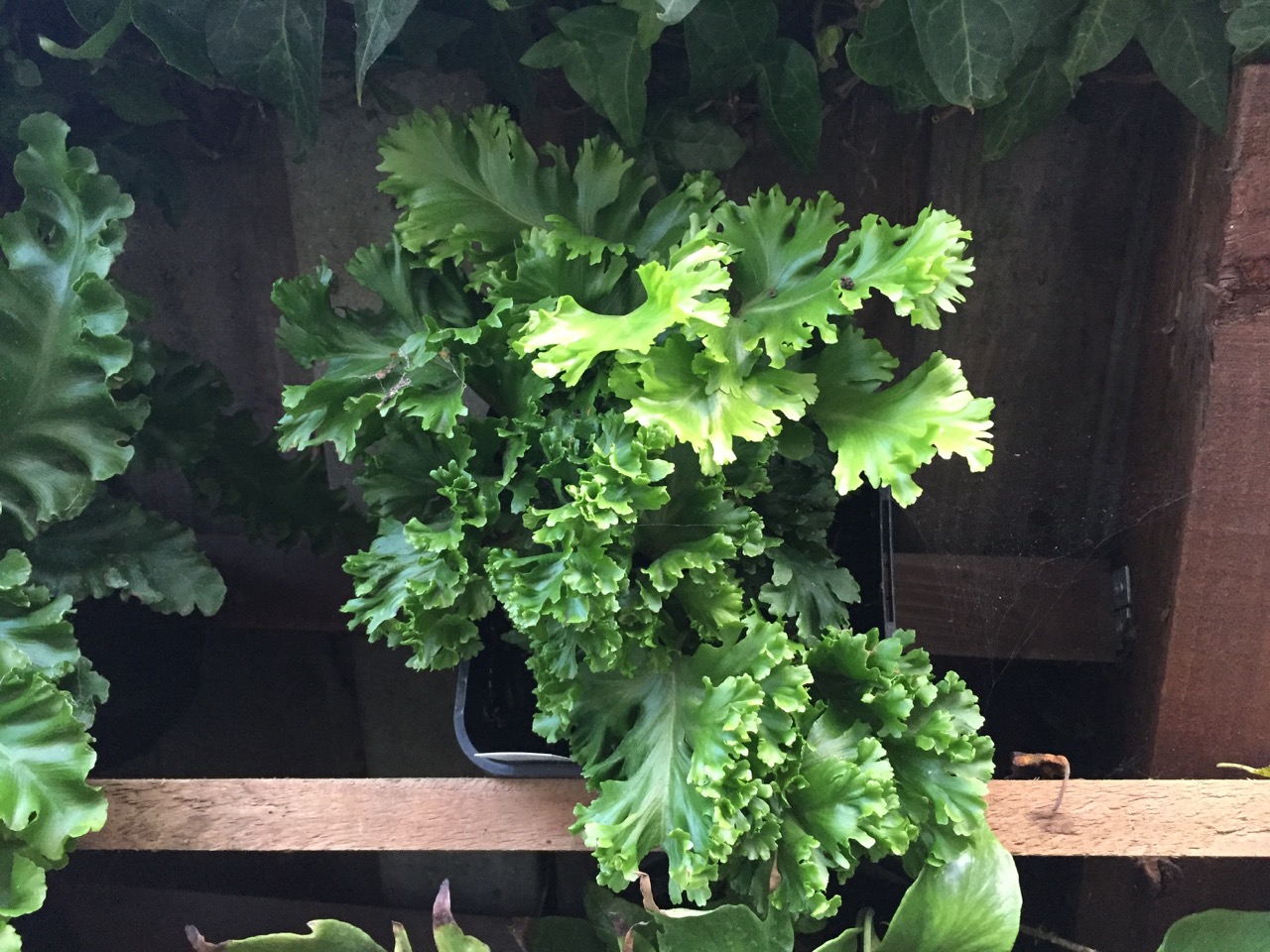
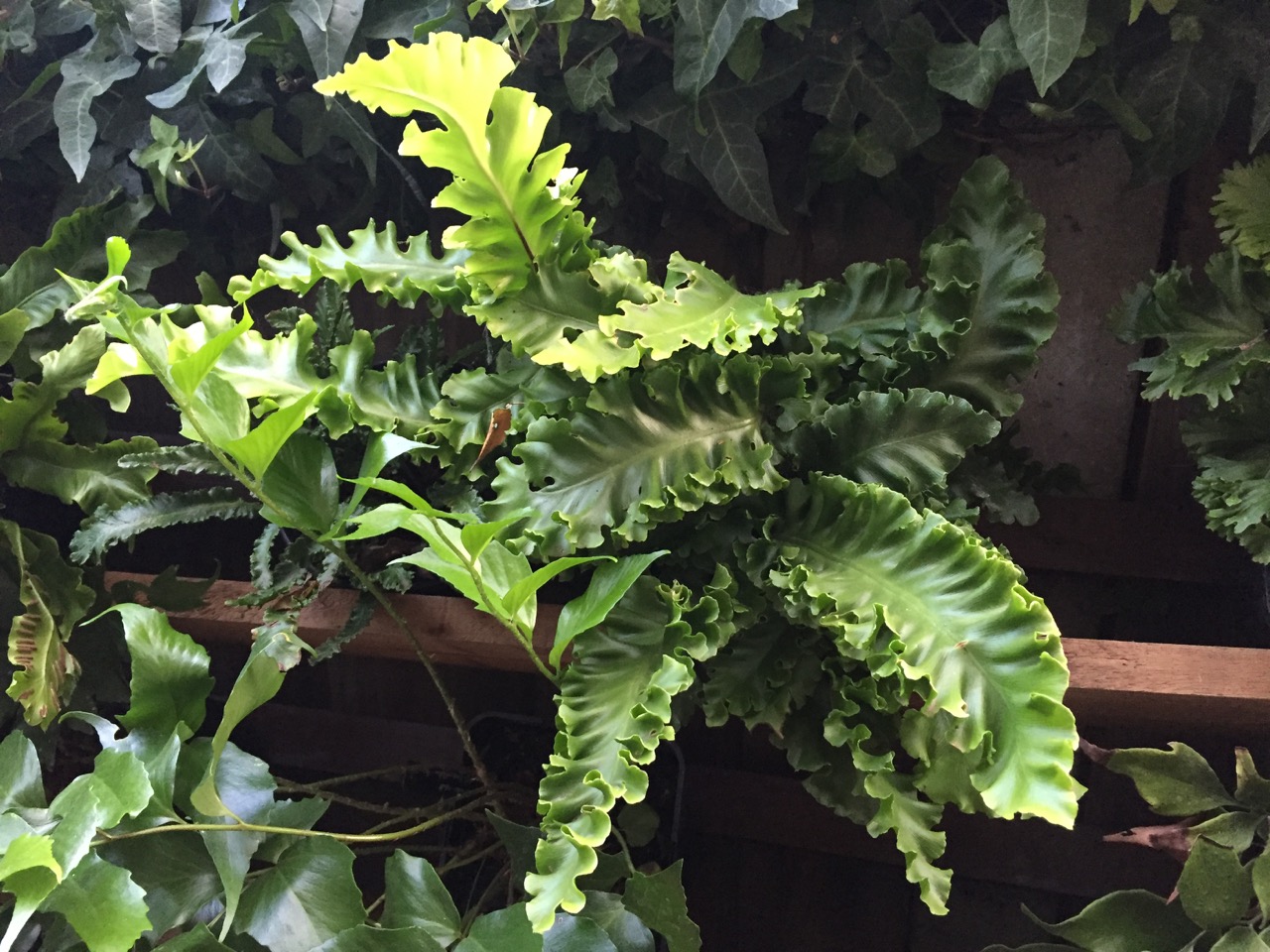
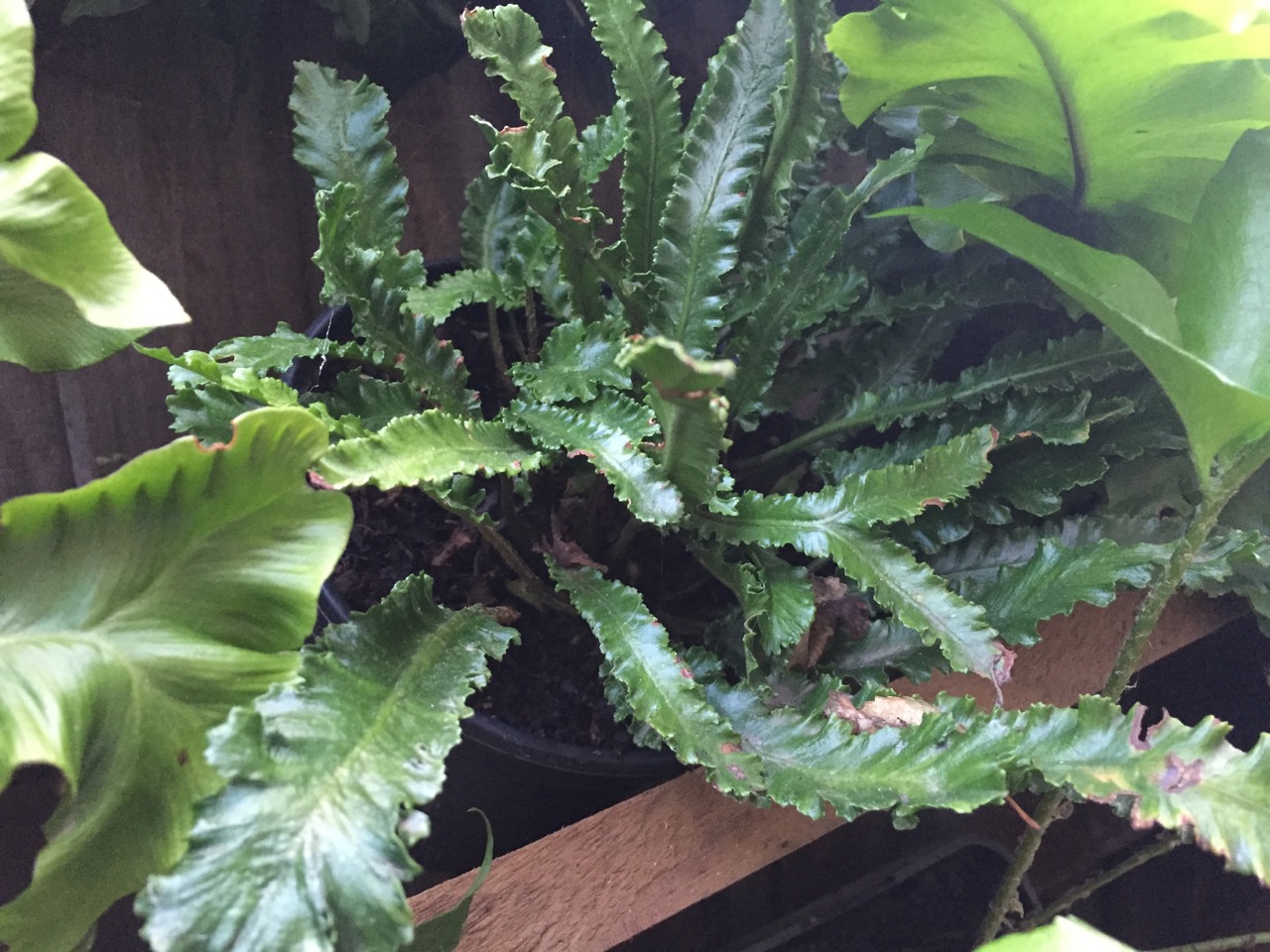
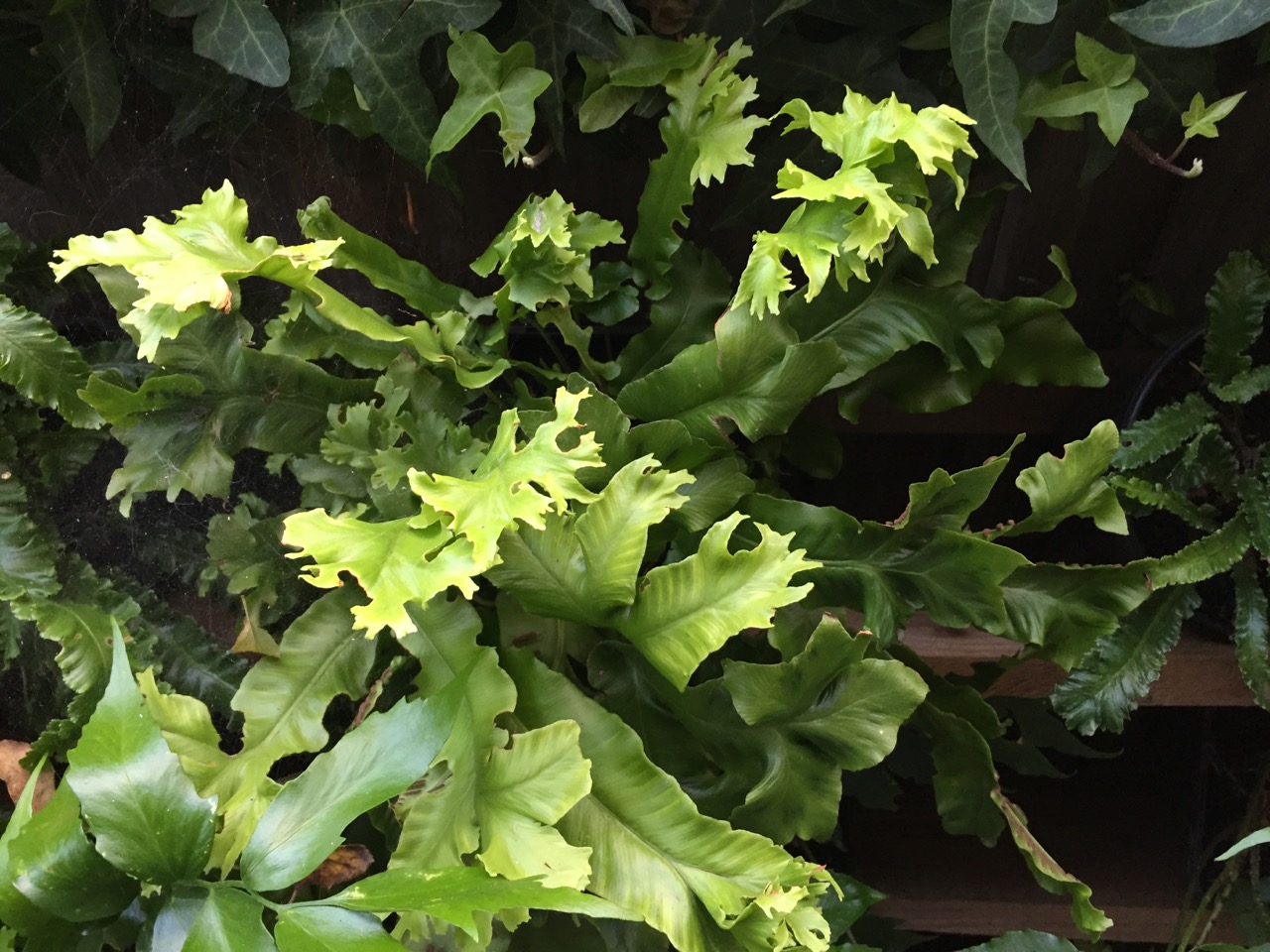
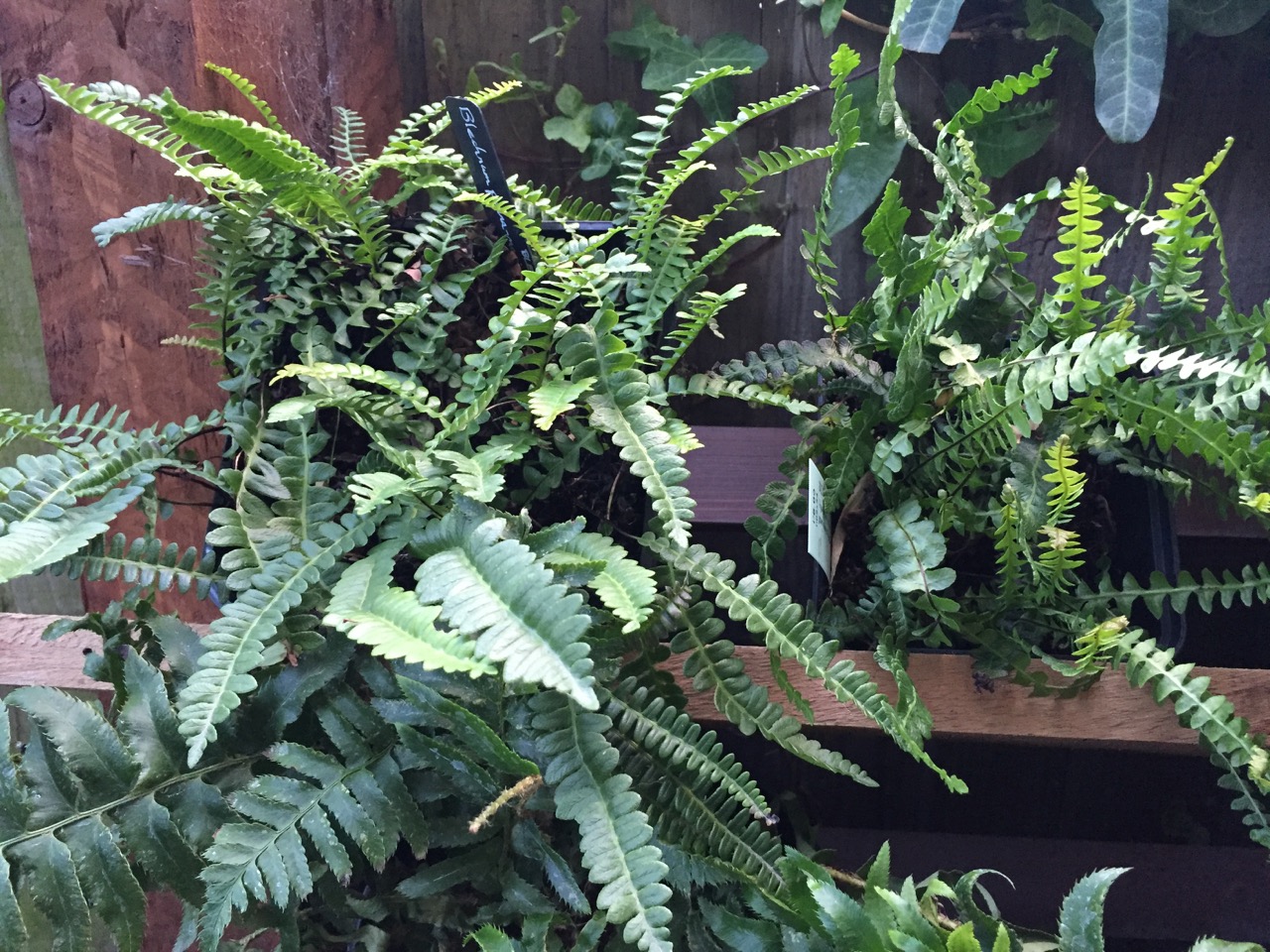
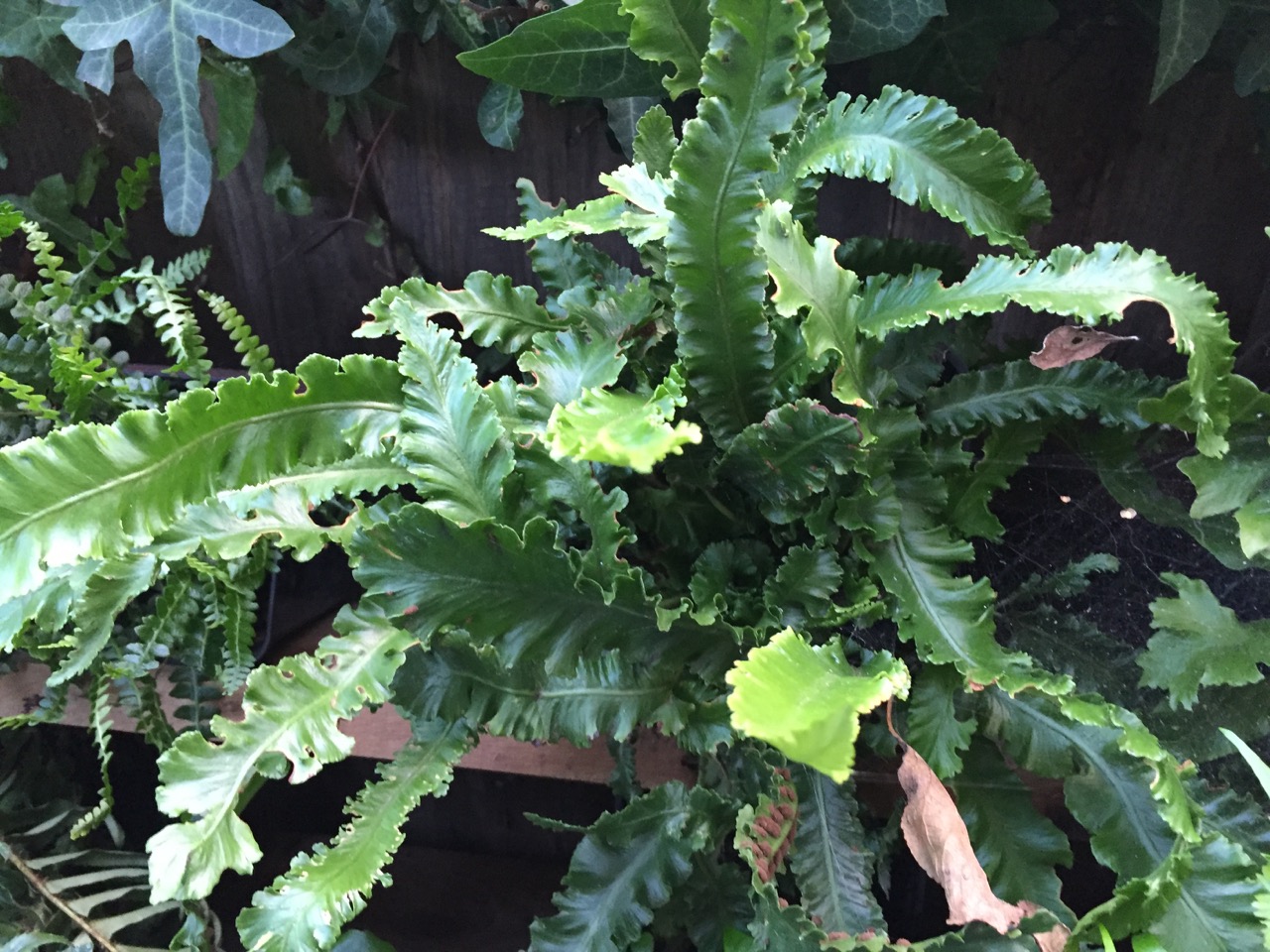




I love this idea. I’m now eyeing up a pallet I’ve got with this in mind 🙂
Ooh, interesting. I have a friend who did this and filled it with different sempervivums for a sunny wall.
I am not surprised you are over the moon. Inspiring project, lovely ferns, great write up! I’d like to do something similar.
Hi, inspired by your fern wall would you build it any differently and how is it watered. Planning mine at the moment. Did you buy the ferns all from the same place? If you could choose one fern to use which would it be. Thanks
Hi Jenny,
Thanks for the comments about the fern wall 🙂 We really like it and have learnt a lot along the way. This year we’ll be buying a few more ferns of the species that thrive well in it.
I bought the ferns from a variety of different places including: Bowdens, Long Acre Plants, Fern Nursery, Binny Plants, Neal’s Nursery and the Palm Centre. They were all great quality but if you can get to the Palm Centre, Long Acre or Bowdens in person it is worth the trip.
I don’t think I could personally only grow one type of fern!! 😀 I love them all too much haha However, in terms of the ones that are easiest to grow and look good, I would recommend a number of Dryopteris as well and Polypodiums. Dryopteris are easy and give you a full, bushy traditional fern look (mostly) and Polypodiums are just super easy, but they are less bushy so not ideal if you want your fern wall to look lush. Also, Asplenium scolopendium cultivars don’t look ‘ferny’ but they’re lovely and incredibly well suited to the dry conditions of a fern living wall.
I’d build it in the same way again, but would probably make it a bit smaller because of the maintenance 🙂
Watering is mostly just by a fine hose spray into the pots, and occasionally a dunking if they need it. I do have an irrigation drip kit but I haven’t set that up yet. That would work too and be easier.
Jack
I *love* this. Great idea… how does it look in winter though, does it hold its own?
Hi Jane! It looked ‘OK’ through most of winter as the majority of the ferns are evergreen. By the end however most of the ferns were a bit tatty. It would be possible to make it look good year round by only using a few species or cultivars of ferns – e.g the Polypodiums. So there’s definitely a trade off, feature or collection. I’m making some tweaks right now for this very reason to make it easier to manage and year round green. For most people I imagine using only a handful of different ferns would be ample, making it more uniform, look good in winter and be much easier to keep watered.
What an inspiring read.
Is that a rainwater harvester I spot in one of the photos –– no chance of watering the Athryriums off of something like that?
Hi Chris, I have been trying that with a smaller number now but unfortunately in summer when it’s dry and hot there just isn’t enough. It look good without them though 🙂
Hi! Greetings from the Netherlands!
I was looking for information about these lovely looking Ferns and what i found out whilst reading your blog made me feel ferntastic!
Im curently a garden design student and i can add this information in my studybook, so, thank you very much for sharing (:
Thanks so much for posting this! I’ve been wanting to create a living wall in my back garden since I moved in 2 years ago but I didn’t think it was possible (everything I looked at involved an expensive irrigation system). I was so excited when I saw your area of the garden was almost identical to mine. I would absolutely love to try a fern wall. I just wondered if you’ve ever had any trouble with vine weevil? Almost all my plants (in pots) in my shady back garden were wiped out last year by them.
I’m glad this is helpful Amelia 🙂 I have had vine weevil but using nematodes and patrolling with a torch at night to pick off the weevils has worked to reduce / get rid of them really well.
Having built the living wall frame I have now ordered ferns from your helpful list. 14 of em to start with. I’m afraid i went a bit mad and ordered 14 different ferns. A mix of silver, green, lime green, evergreen etc. I figure I’ll find out which ones work. I just have x3 90cm windowbox planters to fill so am hoping 4 or 5 per box will be enough. If not, nightmare, I’ll have to buy more plants!
Sounds fab! Good luck, can’t wait to see it up and running! 😀
Hi Jack – we loved watching your fern wall take shape on the Monty Don programme, and it’s an idea that has been banging around inside my head ever since for a portion of our garden fence that receives very little/no light. I am going to have a go at making the shelving myself, as the ones to buy don’t have the right dimensions. What sort of gap would you advise between the shelves? Also have I understood correctly that “Polypodiums” would be the way to go to have an ‘evergreen’ display through the winter? Many thanks.
Jack, is it too late to start planting my fern wall, bearing in mind I live in the Central Belt of Scotland in a windy and salty atmosphere?
Hi Graeme I don’t think it matters too much with a fern wall especially by choosing tough, reasonably sized ferns. But to be sure, yes it might be better to wait for spring. Though, I reckon you have another month before serious weather starts?
Jack
Many thanks I have gone ahead and ordered the first few ferns but may keep them covered until the Spring
Hi Jack.
Beautiful wall 🙂
I’m currently building a small green roof on my bike shed. It’s in our side return of our Victorian terrace, so similar light conditions to yours I think. Are there any species from your fern list that you’d particularly recommend? Our soil depth with will around 12cm, so thinking of using small, tough ferns on the shadiest side.
Hi Niki, definitely go with the smaller species. Polypodiums will be interesting in a roof as they creep around and enjoy that location anyway.
I just watched the episode featuring your garden and fell in love with your fern wall. I was just searching for info on creating a fern wall and came across your site. I live in Canada so I think the only way I could do this is to bring the ferns inside in winter.
Hi Debra, I think you should be fine as long as you use small ferns that grow in Canada? Some are really hardy.
Jack
Hi Jack,
Just to say that your fern wall inspired me to create my own “mini fern wall”. I’m looking forward to observing how it will grow, trying to find new species and of course adding to it.
Hi Jo,
Sorry I missed that comment back then! Some of it I have yes, I didn’t bring many plants but of those I did, most were ferns from the wall and garden. In a weird way I had a stronger attachment to them for some reason, I guess they felt a bit closer to pets haha, it felt wrong to leave them. So I brought my favourites. They took a while to settle in but some are enjoying life in the wetter ground up here.
Jack
Hi Jack! Thanks for sharing your lovely project. It inspired me to try built an small vertical garden in a shady part of out garden. However, having built it i realised it actualty does get some sun ( from 4 pm onwards this time of year). I was planning to mix the ferns with other plants, reservering the more sunny spots for some heuchera’s and saxifragra however the ferns do get some sun. Do do think this would work? Kind regards Stefan
Hi Stefan, sounds great! I think mixing it up is fine, just keep an eye on where the sun falls as you’ve been doing. Ferns can handle sun as long as they don’t dry out.
What is the fern shown in the last detail photo? The one with long, spidery pinnules with tassels on some ends? It’s so unique and I want to get one for my own fernery. Thanks for sharing your project and research with us.
Hi Jack, boring question, what kind of wood did you use here? Don’t want the fence to collapse under the weight of it but equally don’t want it to collapse under the weight of nice ferns….really keen to try on our almost identical situation
Hi Gwilym,
I used normal treated fence posts for the uprights, then I found some solid boards and coated everything in wood preserver. I don’t know the actual wood but it will have been a soft wood, you can make it more robust with hard woods. Think about making the distances between posts short to make them stronger as ours eventually started sagging after a number of years.
Jack
Hi Jack,
Just curious to know… What did you do with your fern collection upon moving to West Yorkshire? Did you take all those lovely ferns with you and re-sited them on a similar (or totally different) “wall”?
Hi Jack, I’m a gardener and planting designer (also partly trained at RBGE) and have just taken on a client with a Wonderwall living wall system and I am putting together the design and installation of the planting. Found your article – very interesting – we are at 300m altitude in the Peak District, the wall is in a sheltered narrow small courtyard, will get some sun in the summer and poss a fair bit of wind, we also are in the snowline in the winter. So quite a job to find plants to fit the bill – they also need to be able to live in just a 1 Litre pot as that is the spec for the system – which worries me a great deal! So great to read about what worked and what didn’t for you in terms of ferns – but I wondered if you have any ideas for something evergreen for some of the upper layers which will get the sun and wind (but also the cold in winter!!) – and like to live in a 1L pot! Tricky eh? I was thinking Euonymus Emerald Gaiety, tiny ones, as a starter. Would love to get your thoughts…..thanks Jack. I have your Patterns book and love it. And amazing websites etc – do you ever get time to sleep? 🙂
Hi Katie,
Personally I would look to alpine plants that won’t outgrow their pots 🙂
Thank you for all of the kind words and good luck with your project.
Jack
Thanks Jack – that is a good idea – if I can find some that don’t mind some shade – and have an evergreen presence – which I’m sure I can.
Hi Jack,
You never answered my post of June 2021. Still just curious to know if you re-sited your fern wall on your new location in W. Yorkshire?